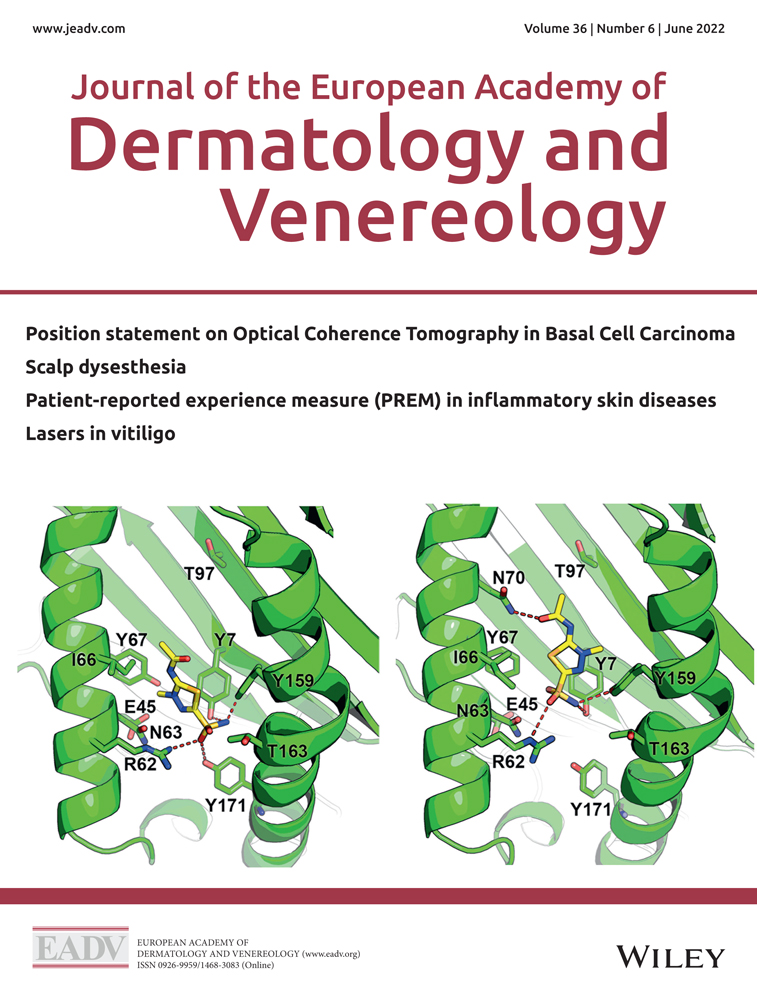Outcome of cutaneous squamous cell carcinoma with microscopic residual disease after surgery and usefulness of postoperative radiotherapy: a retrospective cohort study
Conflicts of interest
None declared.
Funding sources
Javier Cañueto is partially supported by the grants GRS2139/A/20 (Gerencia Regional de Salud de Castilla y León), PI18/00587 and PI21/01207 (Instituto de Salud Carlos III, confanciado con fondos FEDER) and by the ‘Programa de Intensificación of the ISCIII’, grant number INT20/00074.
Abstract
Background
Microscopic residual disease (MRD) after surgery can be a challenging situation in cutaneous squamous cell carcinoma (CSCC) and there is a lack of evidence concerning its management.
Objective
To evaluate the prognosis of CSCC with MRD and the usefulness of postoperative radiotherapy (PORT) in CSCC with MRD.
Methods
Retrospective cohort study of CSCC with MRD through a 10-year period (2010–2019) (n = 244). Disease-free survival and event-free survival were assessed using R (v.3.4.1), considering competing risks. Evaluated outcomes were local recurrence (LR), nodal metastases (NMs), and disease-specific death (DSD).
Results
Median age was 88y (IQR: 10.5). A total of 145 (59.43%) were men and 69 (28.28%) were immunosuppressed. Median tumour diameter and thickness were 19 and 6.4 mm (IQR 11 and 5.5 mm). Patients treated by re-excision had a relapse rate of 4.3% compared with 11.30% and 29.71% in those who received PORT and observation (P = 0.045). The use of PORT was associated with a lower risk of LR compared with observation (HR = 0.206 [0.049–0.859], P = 0.030), but not with a lower risk of NMs or DSDs. In the multivariable models, PORT was again associated with a lower risk of LR than observation (HR = 0.167 [0.039–0.708], P = 0.014), but not with lower risk of metastasis and death.
Conclusions
We always should try to obtain clear margins after surgery. PORT improves local control in CSCC with MRD, but when administered to the tumour bed, it does not reduce the risk of NM and DSD.
Open Research
Data availability statement
Raw data will be provided by the corresponding author upon reasonable request.




